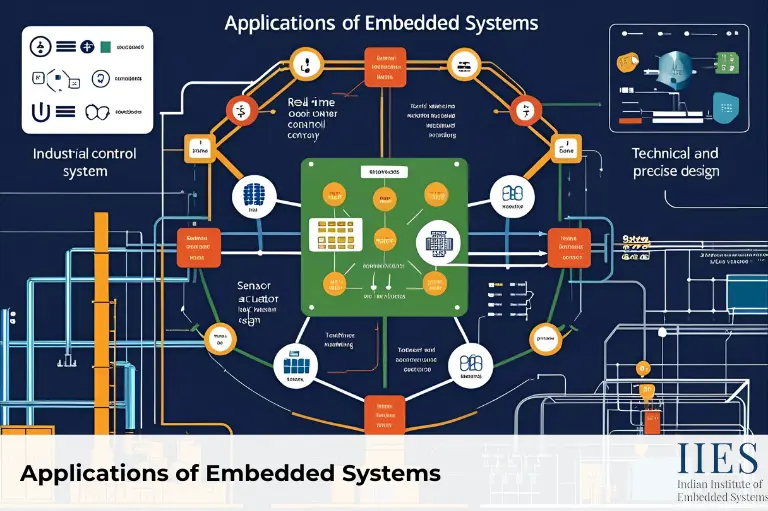
Embedded systems are small computers built into devices to perform specific tasks. They quietly make our lives safer and easier, from phones to cars and medical tools. This guide will explain what embedded systems are, highlight the applications of embedded systems, and share fun project ideas for beginners.
Embedded systems are specialized computing units within devices, built to handle specific functions efficiently. They power smart homes, medical tools, and automobiles, delivering quick, dependable, real-time performance across industries.
An embedded system is a dedicated computing system designed to perform one or a few specific tasks efficiently. Unlike general-purpose computers like laptops or smartphones that can run multiple applications, embedded systems are optimized for specific functions within larger devices.
For example, the microcontroller in a washing machine controls water temperature, spin speed, and cycle duration based on user inputs. This focused approach makes them reliable, efficient, and ideal for real-time operations.
Embedded systems are everywhere, powering devices and machines across industries. Let’s explore some major application areas:
With the rise of IoT, embedded systems have become the backbone of smart homes.
Reliability and precision are vital in healthcare, and embedded systems ensure both.
Modern vehicles use embedded systems for safety and performance.
Many everyday gadgets rely on embedded systems for smooth operation.
Factories and plants depend on embedded systems for efficiency and quality control.
Embedded systems in this sector must meet the highest safety and reliability standards.
If you’re starting in embedded systems, try these beginner-friendly projects:
Key reasons embedded systems are indispensable:
| Application Area | Example Devices | Primary Benefit |
|---|---|---|
| Smart Homes & IoT | Smart thermostats, security systems | Energy savings & convenience |
| Healthcare | Pacemakers, health monitors | Life-saving precision |
| Automotive | ECUs, ADAS, airbags | Safety & performance |
| Consumer Electronics | Smartphones, cameras | Enhanced user experience |
| Industrial Automation | Robotics, process control | Efficiency & quality |
| Aerospace & Defense | Flight control, missile guidance | Mission-critical reliability |

Embedded systems are the invisible force powering countless devices—from small gadgets to massive industrial machines. Learning how they work opens doors to innovation in IoT, robotics, healthcare, and beyond. By starting with simple projects and progressing to advanced applications, anyone can build skills to thrive in the embedded technology field.
Embedded systems are commonly used in smart homes, automotive safety, healthcare devices, industrial automation, and consumer electronics.
They enable devices to perform specific tasks efficiently, improving safety, convenience, and productivity.
They power wearable health monitors, implantable devices like pacemakers, and portable diagnostic tools, helping with continuous monitoring and timely treatments.
Examples include smart thermostats, lighting control systems, and home security devices with real-time monitoring.
Students can build smart traffic lights, automated plant watering systems, home automation controllers, wearable health monitors, and autonomous robots.
They control robotics, manage process variables like temperature and pressure, and perform quality inspection through sensors and cameras
Indian Institute of Embedded Systems – IIES